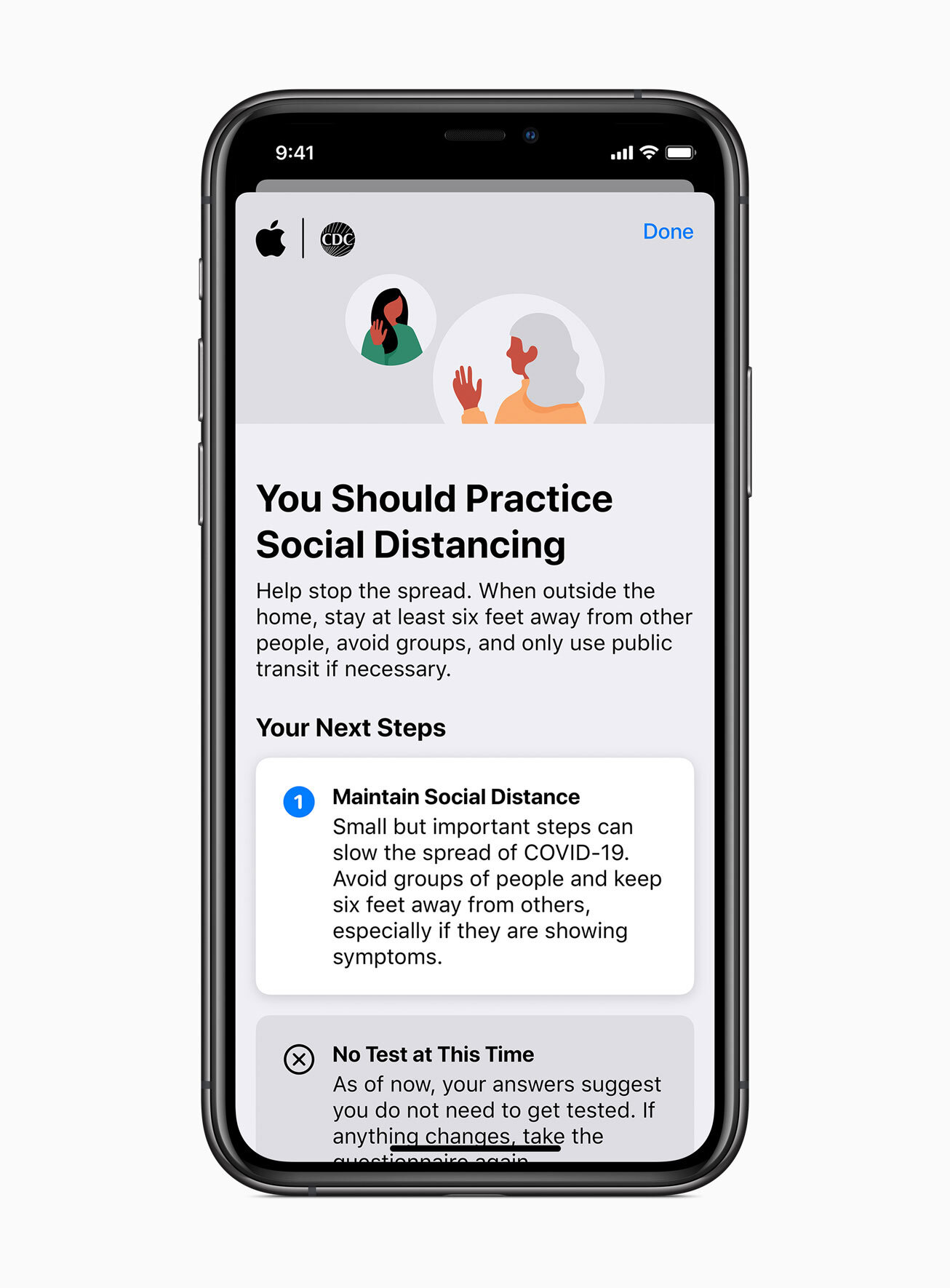
IT'S FAST MOVING BUT WE'LL KEEP YOU AHEAD OF THE CURVE
Progressive Web Apps: The Next Mobile Experience?
You may not have heard of them yet, but Progressive Web Apps (PWA) are about to change the mobile landscape. While introduced in 2015 by Google, PWAs have gained popularity this year. So before it becomes all the rage, what are Progressive Web Apps exactly?
You may not have heard of them yet, but Progressive Web Apps (PWA) are about to change the mobile landscape. While introduced in 2015 by Google, PWAs have gained popularity this year. So before it becomes all the rage, what are Progressive Web Apps exactly?
What is a PWA?
In the most simple sense, PWAs are mobile apps delivered through the web. This technology allows PWAs to deliver an app-like experience on your browser. It feels like a native app due to the use of an app-shell that provides app-style navigations and gestures. Since progressive apps are built on the web, they are not tied to specific devices. A PWA displays seamlessly and identically on all devices, including desktop, mobile, tablet, or whatever comes next.
What’s more, service workers enable a Progressive Web App to load instantly, regardless of network quality. In other words, this web app is designed to work offline and in areas of low connectivity. With the help of pre-caching, it stays up-to-date, serving the user with the newest content upon launch. Similar to an app, the user is able to save the PWA to their home screen to access it at any time. Making it installable, without the hassle of downloading it from the app stores.
PWA vs. Native Mobile App
While native mobile apps provide the highest quality user experience, they come with friction for both the user and the developer. One of the biggest differences between PWAs and native apps is the presence of the “app store middleman”. For Progressive Web Apps, this middleman is completely taken out. For app developers, no app store means you are no longer restricted by iOS and Android’s rules and guidelines. A developer will not have to go through an approval process, allowing the app to be used as soon as it’s ready. There is also no need to manually update the app, as the revised app version will instantly and automatically be available to everyone.
From the perspective of the end user, they are able to access the PWA without having to download it from an app store. Instead, a PWA is linkable, which means anyone can launch the app straight from a URL. You can share it on social media, email, text message, online ad, or link it to a QR code, and the user will instantly be immersed into an app.
By removing all this friction, it will be much easier for users to have access to the app. As the diagram below shows, with every step of the native app download process, 20% of users are lost. Consumers find it tedious having to find the app in the app store, wait for it to download, and worry that it’ll use up all their storage space before they can start using the app. Because PWAs drastically reduce the amount of steps they need to take (essentially making it a one-step process), there is a much higher chance of people actually using the app. In fact, we use 4x as many websites as mobile apps, resulting in a much larger potential user base with a web based app.
Another major difference for app developers is that they will not have to adapt their app to iOS or Android. The fact that PWAs use web technology means they work cross-platform, on most browsers, taking the operating system out of the equation. You can build one Progressive Web App and it will look and perform the same across all devices. Users will have a cohesive experience on any device they choose to launch the app on.
Finally, PWAs are highly discoverable. This means they are easily identified by search engines, allowing them to come up in the search results just like any other web content. PWAs will be treated with traditional SEO, so it gets indexed for more than just the app name, but also the content within the app. It will not be treated as an app specifically, but as a piece of content that can “answer” someone’s “question.”
To put this into context, 60% of searches are now from mobile devices and this number continues to grow. People are actively using their mobile devices to find content, so imagine your PWA coming up in those search results. For example, someone might be looking for a salon in the area, so they use the Google search bar to start their inquiry. The search results will most likely show directories like Yelp and salon websites. If you own a salon business, your PWA could rank in these searches, driving customers straight from the search results to your app. This first touch is an opportunity to convert your customers. An app-like experience will allow customers to schedule a salon appointment from a UI built for mobile. It’s a seamless process starting with a web search and ending with a completed task in the app.
PWA vs. Mobile Website
PWAs are a hybrid of native apps and mobile websites, but how do they differ from responsive websites? Unlike “old school” mobile websites, PWAs are fast. Note that 53% of users will abandon a site if it takes longer than 3 seconds to load. PWAs load instantly, regardless of network state, and provide fast-to-respond interfaces. This eliminates their dependence on the network, as mobile websites do, ensuring an instant and reliable experience for users. A PWA also updates in the background, so users never need to wait for new content to load.
In addition, traditional mobile websites focus on static information, while PWAs are able to provide users with dynamic functionality. PWAs offer an immersive full-screen experience, allowing customers to place mobile food orders, participate in a loyalty program and contact a business. It can also re-engage users with web push notifications, similar to native push notifications.
Who Is Already Seeing Success?
To drive both traffic and re-engagement, cosmetics brand Lancôme launched a Progressive Web App to deliver a fast, app-like experience to their customers.
Lancôme saw mobile traffic exceed desktop traffic for the first time in 2016. Despite a growing number of mobile site visitors, mobile conversion rates didn’t match those for desktop. 38% of shopping carts on desktop led to orders, while the conversion rate for the mobile web was only 15%. These numbers revealed that customers were experiencing significant obstacles when trying to purchase via their mobile device.
At first, Lancôme considered an e-commerce app as the solution. However, they understood that an app only made sense for customers who visited regularly. Mobile shoppers would not return to an e-commerce app weekly, let alone daily, so they wouldn’t see the value in downloading a Lancôme app. The company wanted to build the right user experience on all of their devices. According to Google, “The company needed a fast-loading, compelling e-mobile experience, similar to what they could achieve with a native app—but one that was also discoverable and accessible to everyone via the mobile web”. Enter the Progressive Web App.
The results are staggering:
- 84% decrease in time until the page is interactive
- 17% increase in conversions
- 53% increase in mobile sessions on iOS
- 18% open rate on push notifications
- 8% of consumers who tap on a push notification make a purchase
- All told, the PWA has been a tremendous success, helping the beauty giant make great strides into the mobile revolution.
What does the future look like?
While native mobile apps are by no means going extinct, a PWA can provide the ideal solution for businesses looking to build a compelling and easily adoptable mobile experience for their customers. PWAs offer the best of both worlds, with all the shareability of the web and all the functionality of the native app. Applified Marketing Group has been working on web apps since 2011 and we are excited about this new technology. It finally gives us the ability to implement native features into our web apps. We will be part of the future of apps, where the mobile app and the mobile website become one.
In 2016 Mobile Apps Will Be Ranked Higher Than Mobile Websites!
As you know when it comes to how people find what they want Google reigns supreme and when Google changes how businesses are found we all have to listen. Coming in 2016, Google will be changing how apps rank in their app indexing. It was recently announced app only content within Android apps could now be organized and ranked when searches are conducted from a mobile device.
Google is Now Ranking Mobile Apps Above Mobile Websites
As you know when it comes to how people find what they want Google reigns supreme and when Google changes how businesses are found we all have to listen. Coming in 2016, Google will be changing how apps rank in their app indexing. It was recently announced app only content within Android apps could now be organized and ranked when searches are conducted from a mobile device.
Since 2013 Google has been pushing the idea of mobile apps and they are increasingly finding ways to emphasize them. Recently they changed the algorithm to favor mobile websites over then traditional non-mobile websites. Those that did not have Mobile Websites saw there Google Search Rankings drop in favor of competitors with Mobile Websites. While thousands of businesses are still scrambling to make this change over they need to also be looking at developing mobile apps and not be left behind.
How will Google's App Indexing work?
If you were looking for a restaurant and typed in San Diego Micro Brews in the Google search bar, Google would suggest those Micro Brews with mobile websites first. What is changing is now with Google’s App Indexing it will suggest a Micro Brew with a Mobile app first over one with just a mobile website. Furthermore, if you're on a website for a hotel and the company has a mobile app, Google will push the user towards the mobile app itself.
How Long is Too Long
Not only will the change in Google’s App indexing API share how long users are in the app, but also the amount of time spent within a specific page or section of the app. You can be sure that with this kind of information Google will begin to rank the value of the app page or section based off the amount of time spent or frequency of visits.
Google Apps Maybe First
Being that Google has more access to the content of Android apps compared to that of iOS apps, Android apps may benefit more initially. Google’s App indexing API will still be able to integrate directly with iOS app users so long as the developer makes sure to include this option for direct integration and communication.
Be Proactive, Stay Relevant
Short of it is that Google knows and believes Apps are preferred by users and therefore will suggest them first. As a mobile app development company here in San Diego we have been preaching this for some time and now it is coming to fruition. At UPG Mobile Marketing Group we can help you stay ahead of the curve with your own mobile app and keep your business rankings high and in front of those that matter most, your customers.
The World's Mobile Are You?
Ron's Pro Shop at The Coronado Golf Course just released!
Customers are now searching for and viewing their favorite businesses on their phones much more often than their desktops computers. Mobile devices are the go to source for research, shopping and interacting with companies and conduct business. The need for mobile marketing is higher than ever and brands have to quickly meet this changing landscape if they want to succeed.
The first thing you need to do optimize your web presence for mobile, especially given Google’s latest announcement that takes place this month. Make sure your website, email platform and blog are optimized for mobile. Develop and release an app. You need to get involved in the mobile market if you want to stay relevant in your industry.
A few statistics to consider:
- 99% of users are accessing mobile for content and information;
- 63% of internet access is from mobile
- 62% access email from mobile;
- 15% make purchases from mobile.
These numbers are only going to surge higher. 15% might seem low for online purchasing but you must remember that 78% of users are using mobile to research sales that then turn into in-person sales. Without the web and more specifically, mobile, you might not have made that sale. Mobile users are actually more likely to convert to actual sales than any other type of user.
This shift has far reaching implications for both B2B and B2C business. B2C has had a slight edge when it comes to being mobile friendly but B2B is catching up fast. No matter what type of goods and services your business offers, having a mobile-friendly experience for your customer is imperative.
Make sure your business is optimized for local search. Secondly, make sure it is also optimized for mobile access. Lastly, think about providing advantages or incentives for the user who uses mobile and helps you generate leads.
















